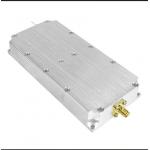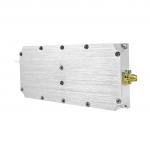Product Background
The widespread application of drones and the emergence of safety
risks: In recent years, the civilian and military applications of
drone technology have shown a "dual-track parallel" trend. From
consumer-level aerial photography to logistics delivery, from
border surveillance to precision strikes, drones have permeated
every aspect of society and the economy. However, the
popularization of technology has also given rise to the "black
flying" chaos. In early 2025, a chemical industrial park in India
suffered an explosion accident due to illegal entry of drones,
causing significant losses; the Pakistani border defense forces
repeatedly reported cross-border drone reconnaissance incidents,
and traditional defense measures frequently failed, all of which
posed a serious threat to low-altitude security.
The inevitable demand for anti-drone technology development:
Anti-drone equipment mainly achieves countermeasures by interfering
with, suppressing, or hijacking the communication links between
drones and their operators. The anti-drone power amplification
module, as the core component of the signal transmission system,
its performance directly determines the countermeasure effect. In
the early anti-drone equipment, due to the low efficiency of the
power amplification module, there were problems such as
insufficient power and single frequency band, making it difficult
to cope with multi-drone cluster attacks and prone to being avoided
by drone frequency hopping technology. Therefore, a more efficient
power amplification module is needed to enhance the countermeasure
capability.
The need for safety protection in specific locations: Airports,
government facilities, military bases, nuclear power plants, etc.,
have extremely high safety requirements. Illegal entry by drones
may lead to serious consequences, such as affecting flight
take-offs and landings, leaking important information, and
threatening the security of critical infrastructure. Anti-drone
power amplification modules can enhance the output power of signal
interference equipment, ensuring that the interference signal
performs at its best in long distances and multi-frequency
environments, providing strong protection for the low-altitude
safety of these locations.
Promotion of related technological advancements: The application of
new semiconductor materials such as gallium nitride (GaN) has
provided technical support for the development of anti-drone power
amplification modules. Compared to traditional silicon-based
modules, GaN modules have significantly increased power density and
improved heat dissipation efficiency, supporting long-term
high-load operation. At the same time, the development of digital
predistortion technology (DPD) and Doherty power combining
technology also helps to improve the performance of the module,
enabling it to better meet the requirements of anti-drone
operations.
Product Specifications
Product display










